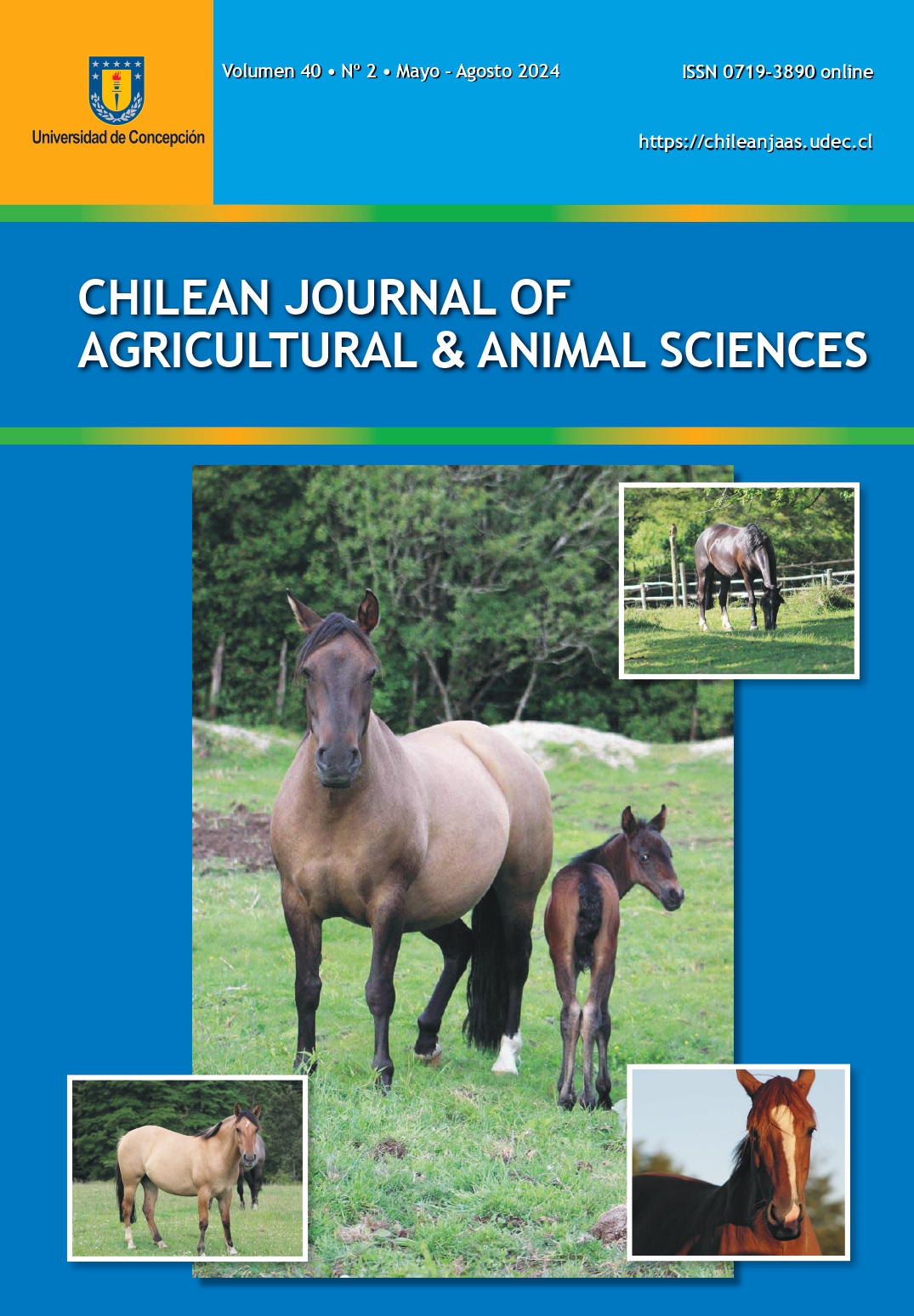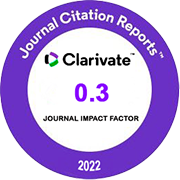SEROPREVALENCE OF PATHOGENIC Leptospira, INFECTING SEROGROUPS AND ANTIBODY TITERS DETECTED IN HORSES FROM LOS LAGOS REGION, SOUTHERN CHILE
DOI:
https://doi.org/10.29393/CHJAAS40-29SCTA30029Keywords:
Leptospira, horses, serology, seropositivity, serogroups, ChileAbstract
Leptospirosis is a neglected bacterial zoonotic disease with worldwide distribution. In horses (Equus caballus), it can be an asymptomatic pathology or cause reproductive problems, abortions, or recurrent uveitis. The present study determined the seroprevalence of pathogenic Leptospira, serogroups causing serological reactions and antibody titers in horses from Los Lagos Region in southern Chile. A total of 51 serum samples were analyzed using the Microscopic Agglutination Test with a panel of eight Leptospira serogroups. Animals with titres equal or higher than 1:100 were considered as serological reactors. A seropositivity of 68.6% (IC 95%=61.5-75.7) (35/51) was determined. Tarassovi was the most frequently detected serogroup (71.4%), followed by Grippotyphosa (8.6%), Autumnalis (5.7%), and Sejroe (2.9%), while coagglutinations between serogroups were also noted (11.4%). Antibody titers ranged between 1:100 and 1:1600 and the most frequent levels were 1:200 (31.4%) and 1:400 (34.3%). A higher seropositivity was observed in males (71.4%) and the male-female ratio among seropositive animals was 25:10. It is concluded that pathogenic Leptospira is present in horses from Los Lagos regions in southern Chile with a high seroprevalence and exposure. An increase of awareness regarding leptospirosis is needed by owners and those people who work and have contact with these animals, due to the zoonotic potential and the probable consequences of the infection. More studies are required to determine other demographic characteristics of seropositive animals and to elucidate the role that horses may play as possible sentinels of exposure to Leptospira at local and country levels.
Downloads
Published
How to Cite
Issue
Section
Copyright (c) 2024 Tecsia Moreno, René Ramírez, Lucía Azócar Aedo

This work is licensed under a Creative Commons Attribution 4.0 International License.






